POSTGRADUATE CERTIFICATE IN TRANSFER PRICING
The PG-Cert (Stage 1) lays the foundation for the rest of the programme and provides an overview of the tools needed to assess the legal environment of a specific jurisdiction when applying the Transfer Pricing principles. The appreciation of operating within an ethical framework and specifically within the Transfer Pricing environment is also discussed.
The module also covers the essential Arm’s Length Principle and Functional Analysis.
Duration
7 months, part-time
Credits
60 University Credits
Effort
6–10 hrs/week average*
*Student dependent
Assessment
2x Module Assessments
Format
Online – Recorded lectures, Prescribed Reading, Live Q&As
Award
University

PG-Certificate (Stage 1) Overview
Exit Qualification: Postgraduate Certificate, or progress to Stage 2 for Postgraduate Diploma

This Postgraduate Certificate award is Stage 1 of this programme and consists of 60 credits in total.
- This stage comprises two modules, each awarding 30 credits.
- The learning will address important issues within the sector, drawing on key points, to ensure you gain a thorough understanding of the topics.
- Students must complete and successfully pass the assigned coursework assessments and the final assessment at the end of each module to claim their award.
- Pre-recorded academic lectures will be released each week, accompanied by the prescribed reading, any additional reading and/or research, as required. Directed reading will relate to provided case law, and will also include reading from legislation, books, articles, academic and professional journals.
- The learning from the lectures will be emphasised with an array of case studies, practice examples and resources, to challenge thinking in a practical context. Engaging activities on the discussion forum, the use of quizzes, polls and other forum built-in activity will further validate the learning objectives.
- Each main topic will end with a live-online tutorial, conducted by the lecturers. The tutorials are designed to be interactive, providing students with the opportunity to ask questions and to consider issues from different perspectives.
This module highlights the legal framework that covers Transfer Pricing. Transfer Pricing touches multinational corporations working in multiple jurisdictions. This module will provide the student with an overview of the tools needed to assess the legal environment of a specific jurisdiction when applying the transfer pricing principles. This is an extensive module, however, it lays the foundation for the rest of the course. The appreciation of operating within an ethical framework and specifically within the Transfer Pricing environment is discussed with the students.
The module also covers the essential Arm’s Length Principle and Functional Analysis, laying the further groundwork for the rest of the course.
The “Arm’s-Length Principle” of transfer pricing states that the amount charged by one related party to another for a given product must be the same as if the parties were unrelatednot related. Therefore, an arm’s length price for a transaction is what the price of that transaction would be on the open market.
The functional analysis is used for transfer pricing purposes. It analyses the functions performed (taking into account assets used and risks assumed) by associated enterprises in a transaction.
Learning Outcomes
On successfully completing this module, the student will be able to:
Course Content
- Apply the rules of Articles 7, 9, 10-12 of the OECD and UN Model Tax Convention to prevent the improper use of tax treaties.
- Interpret and apply Transfer Pricing Case Law considering ethical issues to assess the legality of certain tax planning measures.
- Apply Transfer Pricing policies in line with internationally recognised principles to prevent double taxation and stimulate international trade.
- Analyse the Arm’s length principle for a specific transaction to establish acceptable transfer prices.
- Prepare a functional analysis for controlled transactions to delineate such transactions.
- Select the most appropriate Transfer Pricing method during a specific transaction and justify why this method is indeed the most appropriate.
- Carry out the various steps required to perform a Functional Analysis to determine whether controlled and uncontrolled transactions or entities are comparable.
Knowledge (understanding)
- Identify and explain how transfer pricing impacts companies with multinational operations.
- Describe and illustrate the ethical and moral issues raised by present-day transfer pricing practices.
- Critically evaluate and compare different transfer pricing rules and regulations in key countries.
- Deal with complex legal concepts and critical case law related to Transfer Pricing.
- Explain and critique sections relating to Transfer Pricing within the United Nations and OECD Model Tax Convention, with specific reference to Articles 7, 9, 10, 11 and 12.
- Analyse and , critically reflect on and synthesise complex concepts relating to the Arm’s length principle.
- Explain the term, Functional Analysis, as set out in the OECD Guidelines and provide a critical outline of the various steps required to conduct a Functional Analysis.
Skills (competencies)
- Apply the rules of Articles 7, 9, 10-12 of the OECD and UN Model Tax Convention to prevent the improper use of tax treaties.
- Interpret and apply Transfer Pricing Case Law considering ethical issues to assess the legality of certain tax planning measures.
- Apply transfer pricing policies in line with internationally recognised principles to prevent double taxation and stimulate international trade.
- Analyse the Arm’s length principle for a specific transaction to establish acceptable transfer prices.
- Prepare a functional analysis for controlled transactions to delineate such transactions.
- Select the most appropriate transfer pricing method during a specific transaction and justify why this method is indeed the most appropriate.
- Carry out the various steps required to perform a Functional Analysis to determine whether or not controlled and uncontrolled transactions or entities are comparable.
This module aims to ensure a student can identify the different TP methods for controlled transactions, identify a comparability analysis and determine an arm’s length charge for Intra-Group Services.
The student will fully understand how each method works, the specific conditions for a method to be applied and be able to perform the calculations required for each method.
The module explains the documentation requirements per the OECD guidelines and specific points relating to the BEPS Action list. The concept of risk management is presented to the student. Critical management implications relating to risk management are discussed with the student.
The concept of dispute resolution is explained to the student, specifically the procedures of MAPs, APA’s and corresponding adjustments.
As in module 1, the student is also provided with guidance relating to Ethics within the documentation, risk management and dispute resolution themes.
Learning Outcomes
On successfully completing this module, the student will be able to:
Course Content
Identify and select the most appropriate Transfer Pricing method to establish the arm’s length price or profits between associated enterprises.
Identify possible risks and controversies and apply an ethical solution to manage these risks and controversies.
Resolve international tax disputes through dispute resolution mechanisms such as the Mutual Agreement Procedure and the Advance Transfer Pricing Agreement.
Knowledge (understanding)
- Identify and explain how transfer pricing impacts companies with multinational operations.
- Describe and illustrate the ethical and moral issues raised by present-day transfer pricing practices.
- Critically evaluate and compare different transfer pricing rules and regulations in key countries.
- Deal with complex legal concepts and critical case law related to Transfer Pricing.
- Explain and critique sections relating to Transfer Pricing within the United Nations and OECD Model Tax Convention, with specific reference to Articles 7, 9, 10, 11 and 12.
- Analyse and , critically reflect on and synthesise complex concepts relating to the Arm’s length principle.
- Explain the term, Functional Analysis, as set out in the OECD Guidelines and provide a critical outline of the various steps required to conduct a Functional Analysis.
Skills (competencies)
- Apply the rules of Articles 7, 9, 10-12 of the OECD and UN Model Tax Convention to prevent the improper use of tax treaties.
- Interpret and apply Transfer Pricing Case Law considering ethical issues to assess the legality of certain tax planning measures.
- Apply transfer pricing policies in line with internationally recognised principles to prevent double taxation and stimulate international trade.
- Analyse the Arm’s length principle for a specific transaction to establish acceptable transfer prices.
- Prepare a functional analysis for controlled transactions to delineate such transactions.
- Select the most appropriate transfer pricing method during a specific transaction and justify why this method is indeed the most appropriate.
- Carry out the various steps required to perform a Functional Analysis to determine whether or not controlled and uncontrolled transactions or entities are comparable.

The assessment scheme consists of the following, (per module):
- Coursework Assessment 1 (20 Marks)
- Coursework Assessment 2 (20 marks)
- Final Assignment (60 Marks)
- Total – 100 Marks
To qualify for the Postgraduate Certificate (or progress to Stage 2) the candidate must complete both modules.
Download Course Brochure
PG-Cert | PG-Dip | MSc

